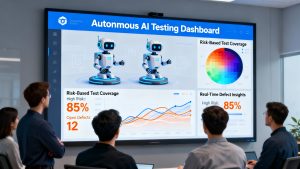For 2025, the front-end stack is a critical business driver, not just a technical decision. User expectations demand instant loading, seamless interactivity, and visually refined interfaces across devices. A solid front-end delivers superior performance, boosts SEO, drives conversion, and retains users, while slow or outdated stacks lead to disengagement and lost revenue.
The Building Blocks: HTML, CSS, JavaScript
Every modern front end still relies on HTML for structure, CSS for styling, and JavaScript for interactivity. Mastery of these three is essential for crafting semantic, accessible, and responsive web applications. Advanced CSS features (Grid, Flexbox, variables, container queries) and modern JS (ES6+, async/await, modules) enable scalable layouts and dynamic UIs that adapt to any device.
Core Front-End Frameworks
In 2025, React, Vue, Angular, and Svelte remain the backbone of front-end development:
- React dominates with component-driven architecture and robust ecosystem. Best for scalable, interactive apps and products that grow over time.
- Vue is lightweight, intuitive, and great for quick development cycles or smaller teams.
- Angular suits enterprises needing strict architecture and TypeScript out of the box.
- Svelte delivers fast load times and minimal bundles, ideal for MVPs and high-performance sites.
Tooling and Workflow Optimization
Modern workflows rely on fast build tools (Vite, Webpack, Parcel), strong typing (TypeScript), and universal code quality tooling (ESLint, Prettier, Babel). These enable bundling, hot reloads, and consistent standards, drastically reducing bugs and improving team productivity.
CSS and UI Libraries
Utility-first CSS with Tailwind CSS accelerates layout development and promotes design consistency. Component libraries like MUI, Chakra UI, and Mantine deliver accessible, theme-ready elements, speeding up interface creation and supporting design systems at scale.
Architectural Innovations: Micro Frontends, Monorepos, Rendering
2025 sees widespread adoption of micro frontends for scalable, modular UI, monorepos for unified development, and flexible rendering strategies (SSR, SSG, CSR) using frameworks like Next.js, Nuxt, and Astro. Teams optimize SEO, performance, and maintenance by choosing the most suitable architecture for their products.
The Headless Ecosystem and API-First Development
Headless CMS (Contentful, Sanity, Strapi, Hygraph) and native headless frontends built with Next.js, SvelteKit, and deployed on platforms like Vercel/Netlify enable rapid iteration, localized content, and seamless API integration. APIs connect authentication, payments, search, and analytics for high flexibility and scalability.
Emerging and Specialized Tools
New frameworks (Astro, Qwik, Remix) solve performance and SEO challenges; cross-platform solutions (Flutter Web, React Native Web) unify experience across devices; 3D libraries (Three.js, WebGL) create immersive interfaces in finance, education, or eCommerce. Web3 front ends and modern runtimes bring additional opportunities for innovation.
Conclusion
Front-end technologies in 2025 are evolving rapidly, empowering teams to create fast, scalable, and conversion-focused digital experiences. Strategic selection of frameworks, workflows, and architectures is crucial to meet business goals and user needs, ushering in a smarter, more adaptive era for modern web development.
Read more such articles from our Newsletter here.



